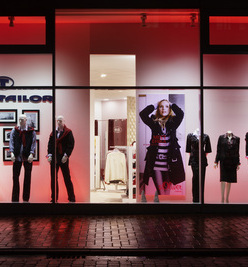
Why are LED lights so popular although the initial investment seems high?
LED lighting can save up to 85 percent of the electricity used by incandescent bulbs and up to 50 percent of the energy used by CFLs and between 20 to 30 percent of the energy used by fluorescent tube lighting. Since LED lights are so energy-efficient, the most common applications are places where lights are switched on for an extended period of time. You can find LED lights in hotels, restaurants, offices, parking lots, streetlights etcetera.
Including the savings of energy, maintenance, HVAC the investment in LED compared with incandescent bulbs pays it self back in about 1,5 years, compared with CFL’s in about 3-3,5 years. That are internal rates of returns on investments of 30-70%! calculated with 0,10$/kWatt which is less then half the price paid in the EU for electricity!
Most of the energy consumed by incandescent light bulbs are converted in heat. In colder climates not such a problem but if you need airconditioning it is. Or think of retail space where warmth emitting light above fresh veggies reduce the freshness.
Unlike fluorescent tubes and CFLs, LEDs don’t contain hazardous materials, such as mercury. Since fluorescent tubes and CFLs contain mercury, they must be properly disposed of in order to prevent mercury from poisoning landfills.
Also, most fluorescent lights cannot be dimmed and many can flicker. Some people are sensitive to this flicker and experience headaches, migraines and eye strain. LED lighting uses solid-state technology, which allows effective dimming in many applications and eliminates flickering.
Fluorescent lights can also take several minutes to achieve full brightness and even longer in cold environments. LED lights are also instant-on and can withstand extremely cold conditions.
And, high quality LEDs produce better light that shows color more effectively than fluorescents. If you want warm light, look for lighting that is close to 2700K. If you want a more neutral light, look for something closer to 3500K and if you want a cooler light, look for 5000K or more.
But you also need to be aware of color rendering. The ability to make colors look true – that is to have a tomato look tomato red – is called color rendering. The color rendering index (CRI) characterizes light sources in view of their ability to produce “natural light” and can be between 0 and 100. The closer an LED light comes to 100 on the color rendering index (CRI), the more naturally colors are rendered, and the light is perceived as more pleasant. The CRI of fluorescent tubes is often around 72. LED lighting fixtures have a CRI of between 92 and 94.
With the right design, LED lights can have a lifetime of 50,000 hours and more in continuous operation. Depending on how many hours-a-day they are operating, that can be from 6 to 7 years to as many as 20 to 30. you can imagine that this comes in handy in maintaining buildings and operations.
Unlike other lighting technologies LEDs do not completely fail—they grow dimmer.

Comments by our Users
Be the first to write a comment for this item.